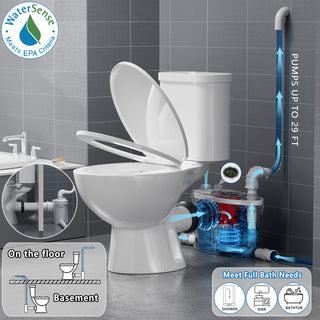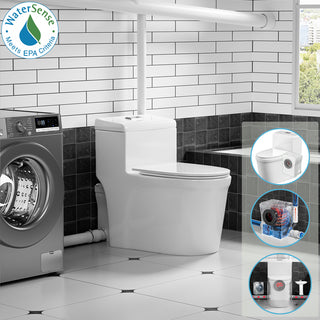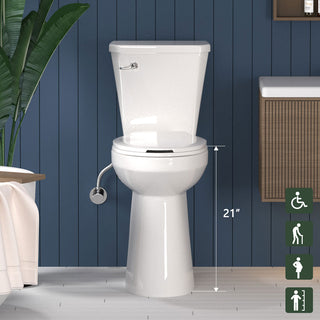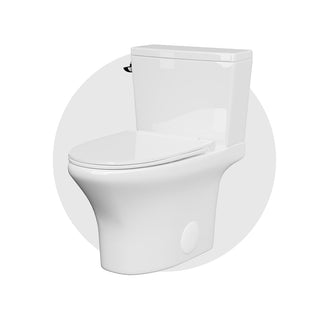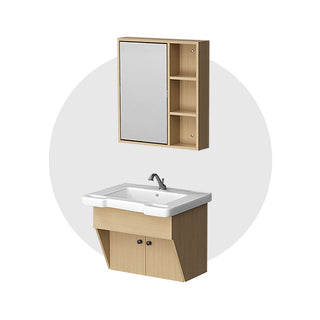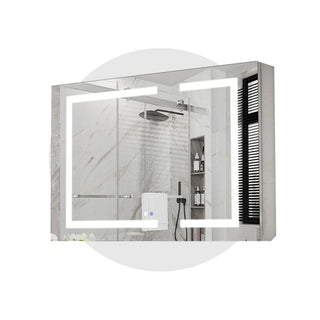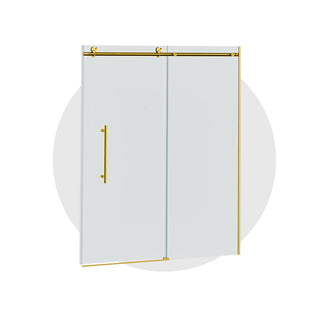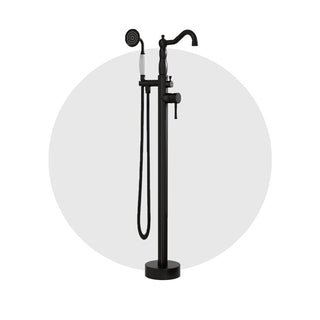Adding a new bathroom where traditional plumbing isn't feasible? You might have heard of macerators — powerful pump systems that allow toilets to flush waste horizontally and even uphill. But can a macerator be fitted to any toilet? Not quite. In this guide, we’ll walk you through what macerators are, which toilets they work with, and where they're not allowed.
What Is a Macerator and Why Use One?
A macerator is a device that grinds solid waste and toilet paper into a fine slurry, then pumps it through narrow pipes — often as small as 3/4" to 2" — to the main drain or sewer line.
This technology enables homeowners to install bathrooms in areas where gravity-fed drainage isn’t possible, such as:
- Basements
- Attics
- Garages
- Cabins or guest houses far from the main stack
Because macerator systems are compact and require only a nearby power source and a small-diameter discharge line, they’re ideal for retrofit projects or space-constrained renovations.
Can You Add a Macerator to Any Toilet?
This is one of the most commonly asked questions — and for good reason. While many homeowners hope to connect a macerator to their existing toilet, the reality is more restrictive.
A standalone macerator pump usually requires a rear-outlet toilet — also known as a rear-discharge or horizontal-discharge toilet. This type of toilet flushes waste through an opening at the back, making direct connection to the macerator possible.
Unfortunately, most traditional toilets in the U.S. use a bottom outlet that sends waste straight down into the floor flange. These models are not compatible with macerator pumps unless they’re part of a specially engineered system.
✅ Can you use any toilet with a macerator?
No. You’ll need a compatible rear-outlet toilet or an all-in-one upflush system designed to work with a macerator.
So while some retrofits are possible, you can't simply attach a macerator to just any toilet without risking performance issues or plumbing code violations.
Where Is a Macerator Not Acceptable?
Macerator systems aren’t always legal or appropriate for every situation. In fact, local plumbing codes in some U.S. states and counties prohibit their use in certain areas — particularly for primary bathrooms.
🚫 Where is a macerator not acceptable?
- In main bathrooms where traditional gravity drainage is available
- In permanent residential applications not approved by local code
- In homes without adequate venting or electrical access
- In settings where pump noise or potential power outages are a concern
Additionally, some jurisdictions only allow macerators for temporary or auxiliary use — such as in guesthouses, pool cabanas, or workshops.
Always consult a licensed plumber and check local building codes before making a purchase.
When Does a Macerator Make Sense?
Despite their limitations, macerators can be game-changers in the right scenarios. They're ideal for:
- Basement bathrooms below the main sewer line
- Attic conversions where vertical plumbing isn't practical
- Garages, workshops, or pool houses with limited access to large-diameter pipes
- Renovated areas where breaking the slab to install new plumbing is too costly
In these situations, a macerator toilet can save thousands in labor and material while adding modern functionality.
🔧 Better Alternatives to Retrofitting an Existing Toilet
If your current toilet isn't compatible with a standalone macerator pump, manually retrofitting it can lead to poor performance, leaks, or code issues. Instead, consider these smarter alternatives:
✅ Buy a complete macerator toilet system
These all-in-one kits pair a rear-outlet toilet with a matching macerator pump. They’re designed to work seamlessly together, simplifying installation and ensuring reliable performance.
✅ Use a universal upflush toilet kit
Some manufacturers offer retrofit kits that connect with select two-piece rear-outlet toilets. Always check the compatibility list before purchasing.
These options eliminate the guesswork and help ensure your system runs safely and efficiently.
⚙️ Installation Considerations: Match First, Install Later
Choosing a macerator isn’t just about pump power — it must physically fit your plumbing setup. Before you buy, confirm the following:
1. Discharge Port Diameter Compatibility
Make sure your toilet’s discharge pipe matches the pump’s inlet. Most macerators accept 3"–4" connections — check measurements and whether adapters are required.
2. Discharge Port Height
The macerator’s inlet should be level with or slightly lower than the toilet outlet to allow smooth drainage and avoid system strain.
3. Room Behind the Toilet
Macerator pumps are typically installed behind the toilet. Confirm there’s enough clearance, or consider using an extension pipe to position the pump behind a wall if space is tight.
Getting these basics right helps you avoid installation headaches and ensures your system runs as intended.
💡 If your toilet brand also offers macerator pumps, provide your order number or a photo to the brand’s support team — they may recommend a pump model that perfectly fits your toilet.
✅ Conclusion: Can a Macerator Be Fitted to Any Toilet?
The short answer: no. While macerators offer flexible plumbing solutions in tricky spaces, they require compatible toilets — typically rear-outlet models.
Retrofitting a pump onto a standard floor-outlet toilet is rarely feasible and may not meet code.
If you're unsure whether your setup qualifies, speak to a plumber — or choose an all-in-one upflush system for peace of mind.
👉 Want to learn more about how macerating toilets work and which models fit your needs best? Click here to explore our full guide to macerating toilet systems.
🧩 FAQs
1. Do You Need a Special Toilet for a Macerator?
Yes. Most macerators require a rear-outlet toilet to connect properly and function efficiently.
2. Can You Add a Macerator to Any Toilet?
No. Compatibility depends on outlet type and pipe alignment. Standard floor-outlet toilets usually don’t work.
3. Where Can’t a Macerator Be Used?
In areas where code restricts them — such as primary bathrooms, poorly ventilated spaces, or homes without backup power.
4. What Are My Options If My Toilet Isn’t Compatible?
Consider a macerator toilet kit or a universal upflush system that’s pre-matched and easier to install.


